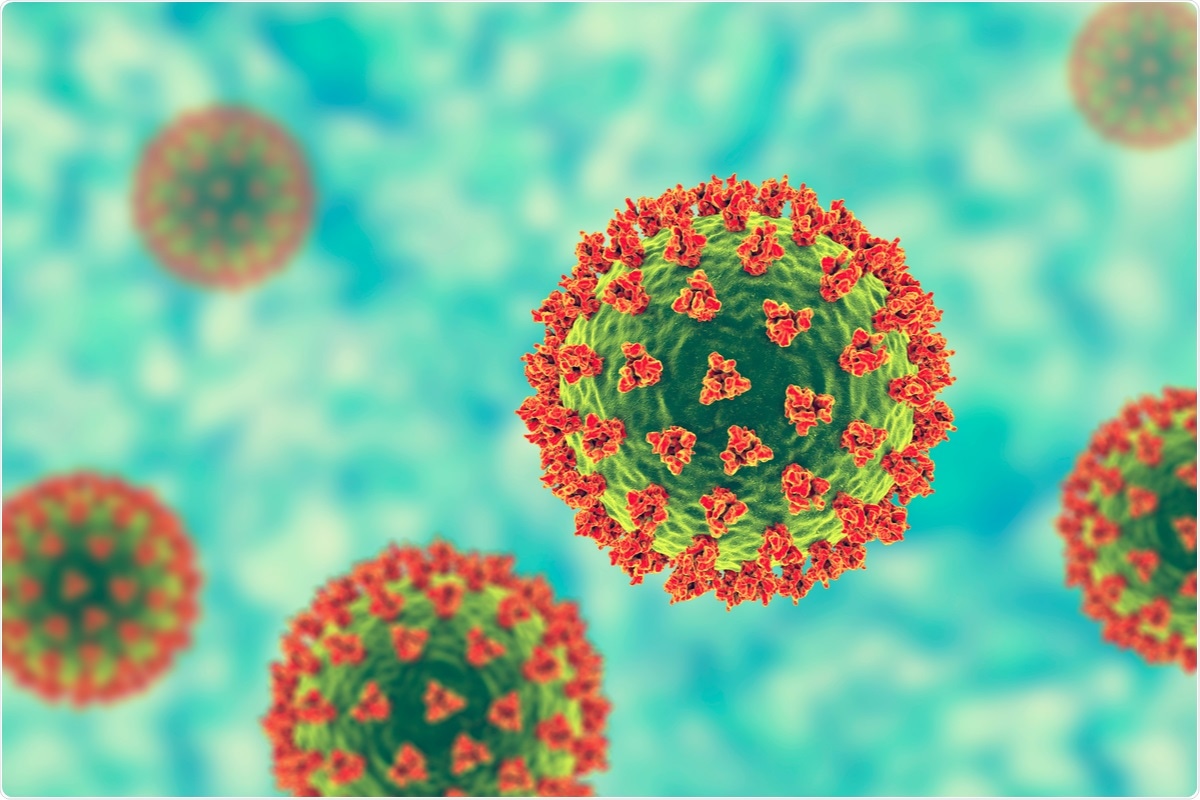A new study published in the Journal of Virology used a combination of a computer-aided drug design (CADD) approach and cell-based in vitro assays to identify five potential severe acute respiratory syndrome coronavirus 2 (SARS-CoV-2) inhibitors. Of the five, two inhibitors showed antiviral activity against SARS-CoV-2 and emerging variants from South Africa and Scotland.
 Study: Discovery and evaluation of entry inhibitors for SARS-CoV-2 and its emerging variants. Image Credit: Kateryna Kon/ Shutterstock
Study: Discovery and evaluation of entry inhibitors for SARS-CoV-2 and its emerging variants. Image Credit: Kateryna Kon/ Shutterstock
Necessity for developing potent antivirals
Due to the urgency of the pandemic and the gravity of the disease, attempts were made to repurpose several therapeutic candidates for treating coronavirus disease 2019 (COVID-19). In the United States, only remdesivir has been approved for the treatment of hospitalized COVID-19 patients. However, according to one clinical study by World Health Organization (WHO), remdesivir showed no significant effect on hospitalized COVID-19 patients.
Many people are hesitant to take the new vaccines developed against SARS-CoV-2. Vaccine availability is also an issue in several places. Due to these reasons, 100% vaccination may not be possible. Meanwhile, children, pregnant women, and immunocompromised individuals remain a vulnerable population.
Also, due to the emergence of the new variants of concern (VOCs), the efficacy of vaccines is compromised. Therefore, there is a requirement to develop antivirals for the treatment of COVID-19.
Principle for developing potent antivirals
SAR-CoV-2 binds host cells via the Spike (S) protein, particularly the S protein's receptor-binding domain (RBD). RBD binds the host cell receptor angiotensin-converting enzyme 2 (ACE2). This binding is a major determinant of cellular entry and makes it a good target for developing antivirals.
Since S-RBD/ACE2 binding is one of the early and crucial events of the SARS-CoV-2 viral life cycle, it has been well-studied. There are two studies on the high-resolution crystal structure of RBD and ACE2. A careful examination of these structures reveals a pocket of the right size for designing drugs using an in silico approach.
In silico approach for developing potent antivirals
The researchers used a CADD approach to test around 8 million drug-like compounds that can physically and chemically dock within the S-RBD/ACE2 pocket. These small molecules can potentially block the S-RBD/ACE2 interaction. The top 500 compounds were re-docked, and the results were manually visualized for the interactions between the compound and S-RBD/ACE2.
The computed pharmacological properties and ADMET (absorption, distribution, metabolism, excretion, and toxicity) determine the compounds' safety, uptake, elimination, metabolic behavior, and effectiveness. According to these, five compounds were selected. They all were druggable. These were further examined for SARS-CoV-2 inhibitory activity using in vitro assays.
In vitro assays for assessing potent antivirals
When assessed for blocking the S-RBD/ACE2 binding, all five compounds could block this binding to different extents.
Next, the researchers screened for entry inhibition potential of the compounds using lentiviral pseudovirus expressing SARS-CoV-2 spike protein because this mimics the SARS-CoV-2 entry in the host cell. Two compounds, MU-UNMC-1 and MU-UNMC-2, could inhibit the entry of the virus into the host cells.
These two compounds were further tested for antiviral efficacy against SARS-CoV-2 isolates. In these SARS-CoV-2 infection assays, both the compounds showed antiviral activity in human bronchial epithelial cells. They were also able to effectively block the replication of the South African and Scotland variants, two rapidly transmitting VOCs.
Antiviral efficacy was tested after different times of addition to SARS-CoV-2 infected cells to determine at what stage of the viral life cycle the compounds exhibit their antiviral effect.
When the compounds were added two hours post-infection, 80% reduction in SARS-CoV-2 infectivity was observed; when added at the time of infection, 40% reduction in SARS-CoV-2 infectivity was observed; and when added four hours post-infection, no reduction was observed.
Thus, the two compounds tested were entry inhibitors that blocked the entry of the virus into the host cells by interacting with the S-RBD/ACE2 binding interface.
Furthermore, the researchers evaluated the antiviral effect of the compounds in combination with remdesivir. Remdesivir and MU-UNMC-1 combination showed an antagonistic effect, while remdesivir and MU-UNMC-2 showed a synergistic effect.
MU-UNMC-2
Using the SwissADME web portal, the researchers computed the biophysical properties MU-UNMC-2, the compound that showed antiviral effect and a synergistic effect with remdesivir.
According to this, the compound is predicted to be highly permeable, moderately soluble, with low toxicity. The pharmacokinetics data indicate that the compound has high gastrointestinal absorption. MU-UNMC-2 was also predicted to present high drug likeliness.
Further studies
This study has identified and tested two SARS-CoV-2 entry inhibitors. These compounds fall within the drug-likeliness category. MU-UNMC-2 alone or in combination with remdesivir showed antiviral activity against the original viral isolates against two emerging mutant variants. MU-UNMC-2 has a favorable physicochemical profile and can be considered in pre-clinical trials. It may potentially be a prophylactic or therapeutic drug against COVID-19 after validation.